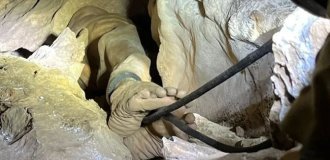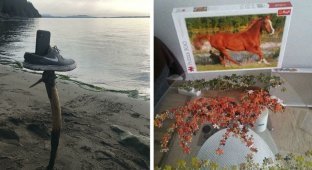The real price of the Klondike: 40 out of 100 people survived, only 4 of the survivors found gold (7 photos)
Festivities on the occasion of the onset of a fever? Why not! Yes, and in honor that salt was sold at the price of gold? And definitely the third. Monday in August? What are we talking about? 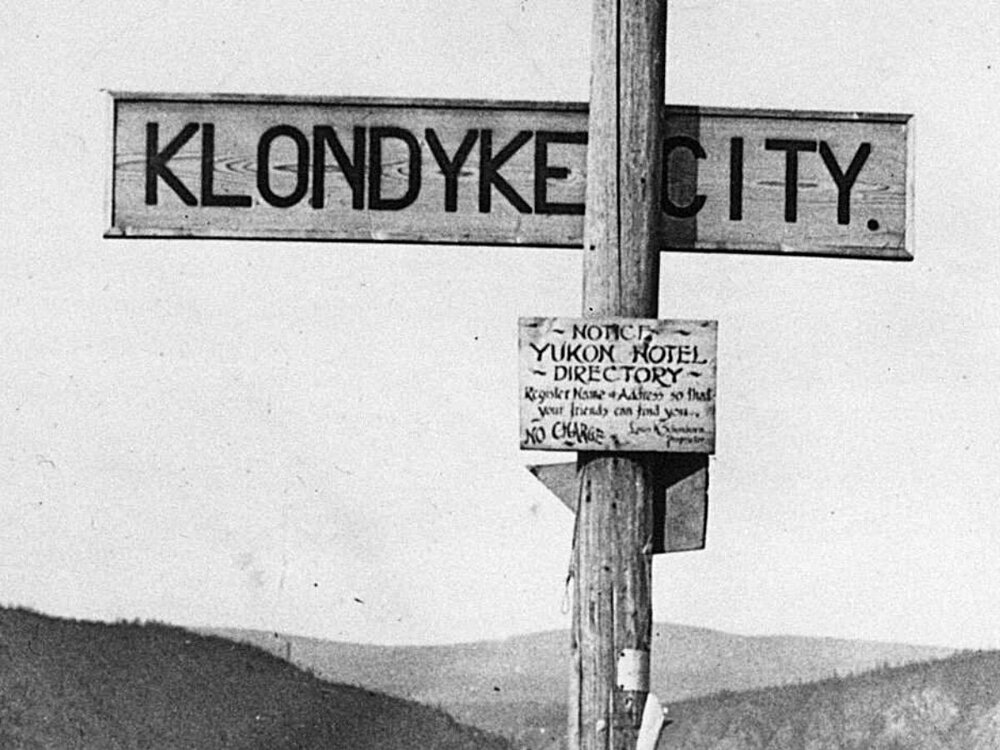
Road to the Klondike
And, of course, we are not talking about a simple, but about a world-famous Klondike gold rush. In the Canadian Yukon, every year in The third Monday in August is celebrated as Discovery Day. honor of the discovery of gold deposits in the tributary of the Klondike River in the distant 1896 year.
In fact, similar "fever" from the middle of the 19th century flashed here and there around the world - in the hope of getting gold, people traveled to California, and to Australia, and even to Siberia.
Gold has been sought in the Klondike region of the Yukon River Basin in northwest Canada since about the 1870s. 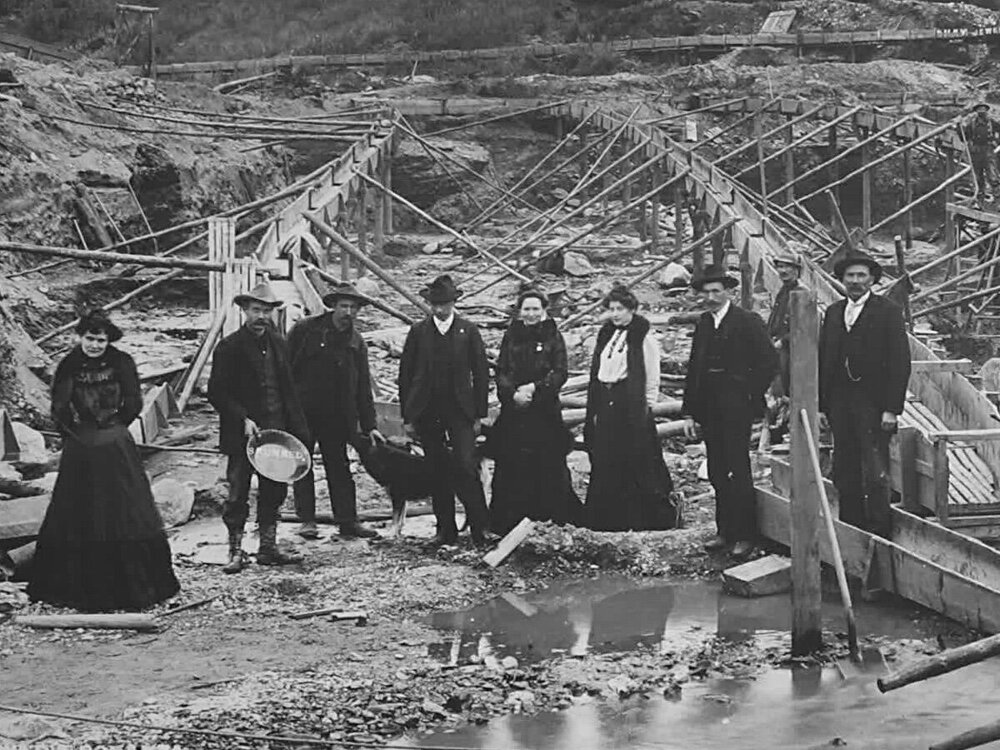
This is what the gold mines on Klonike looked like
But it has been really “fevery” here since 1896, when in In August, three prospectors discovered a nugget in a tributary of the Klondike River - Rabbit Creek (later renamed Bonanza Creek).
The discovery was made on August 16, and the very next day, on August 17 August, lucky prospectors announced their claims to opening. It was this day since 1911 that was declared Day in the Yukon discoveries.
It is celebrated on the third Monday of August - apparently because in 1896 August 17 fell on that day.
It is believed that the first piece of gold mined by the miners weighed about a quarter of an ounce. 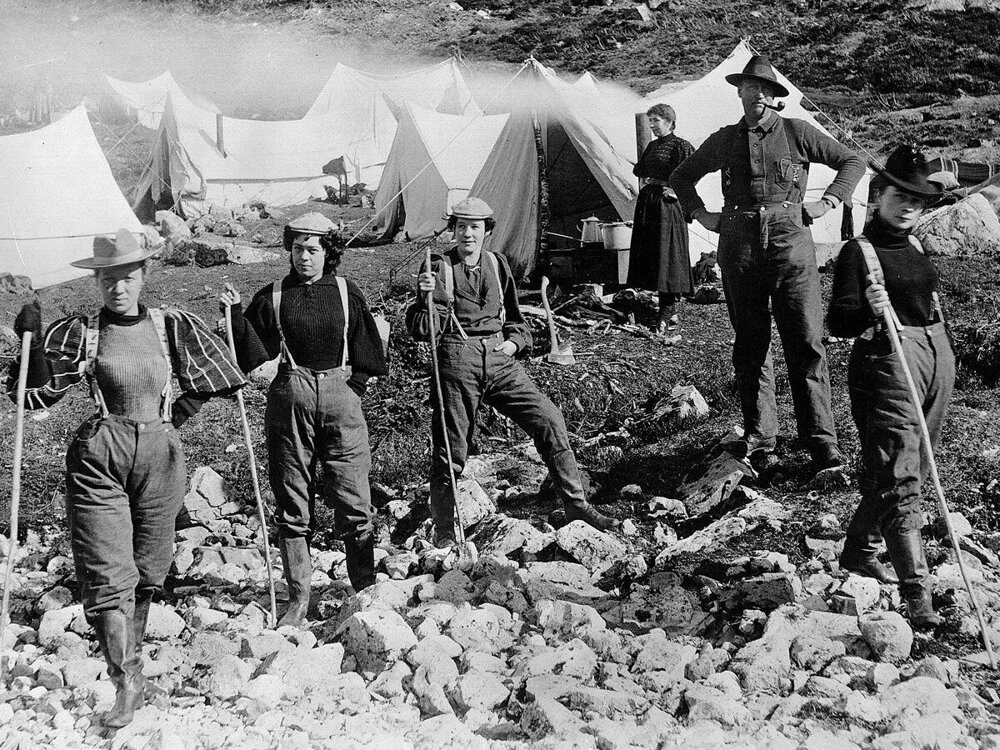
Both men and women wanted to try their luck in the Klondike
Assuming that we are talking about a troy ounce equal to 31.1035 grams, which is the main measure in trading today precious metals, it turns out that the nugget weighed something around 7-8 grams.
It cost $4 at the time. And soon lucky miners were able to completely fill the gun case with gold from hard drive. Further studies have shown that in the vicinity of - richest deposits of gold.
The news about the find quickly spread to the local residents, but it reached the outside world only with the opening of navigation. 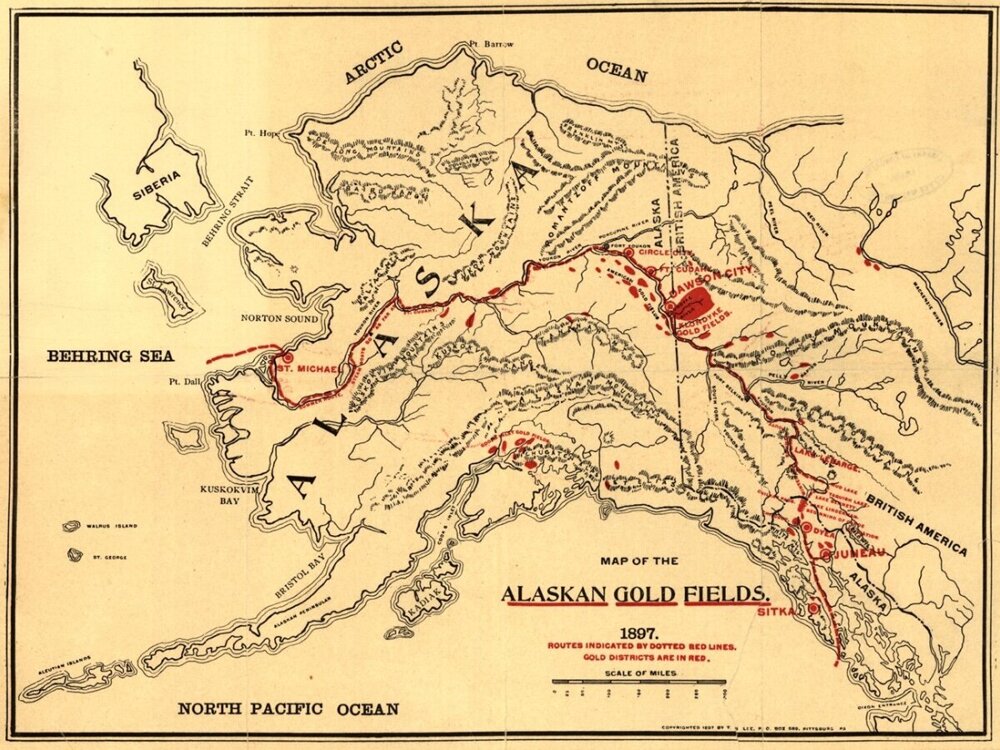
Map showing the town of Dawson, Alaska, 1897
Thus, in the summer of 1987, two steamships - "Portland" and "Excelsior" - brought from the Klondike to Seattle and San Francisco in total complexity of about 3 tons of gold.
This had a stunning effect and tens of thousands of people rushed to try their luck in search of gold.
Lucky, of course, not everyone. And the journey itself harsh northern regions, and living in it, and mining gold there were test is not easy.
It is believed that for gold in the Klondike in total about 100 thousand people ventured to go - about 60 thousand died on the way, or, unable to withstand the hardships of the path, returned. 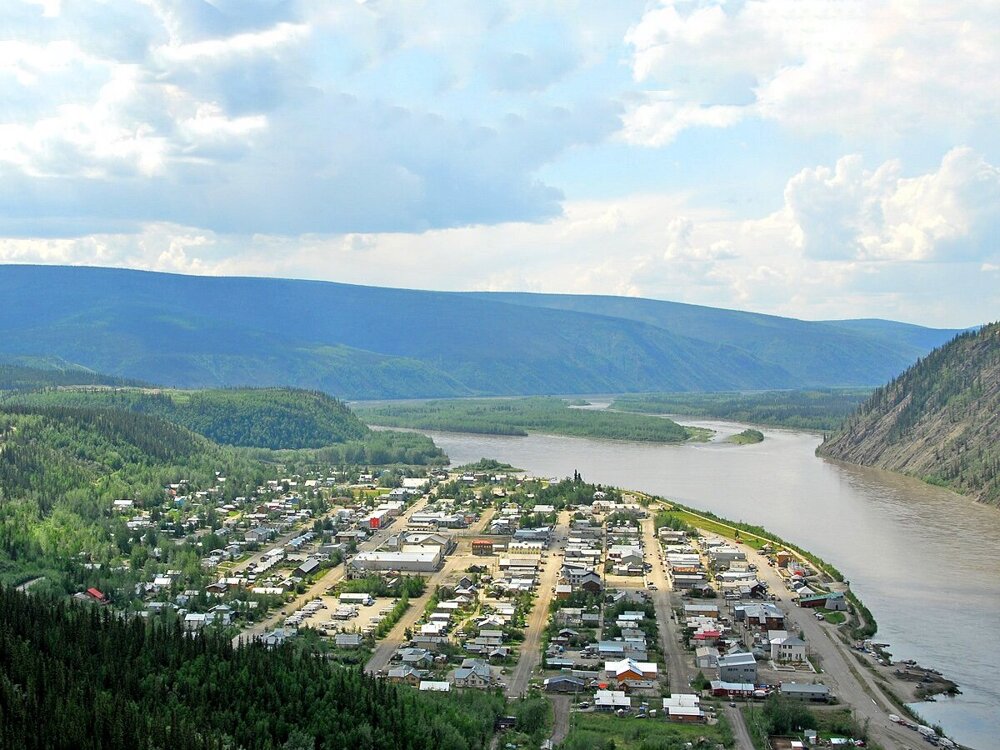
Modern City of Dawson
They reached Dawson (the settlements where the gold diggers lived) about 40 thousand people. And only 4 thousand were actually found in the end gold…
Sharp popularity and violent activity, of course, could not not affect the development of the region. By 1899, from Skagway (Alaska) to Dawson network was extended by a telegraph line, which provided a quick international communication. In 1898 it was started and in 1900 completed the construction of the railway from Skagway to Whitehorse.
An increase in the number of ships plying between Canada and other countries, and the ticket price, they assure, could reach up to 1 thousands of dollars - fabulous money for those times. 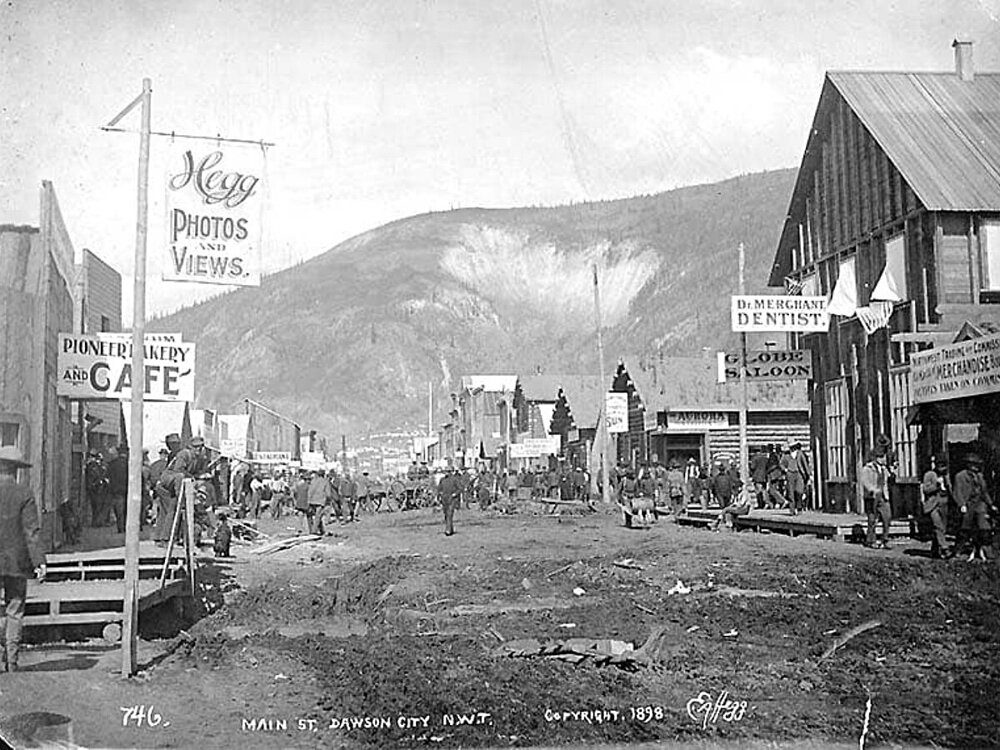
Street in newly built Dawson City
Concentrated center of life and activity gold miners was the newly built city of Dawson, founded in the place confluence of the Yukon and Klondike rivers.
The city grew at a breakneck pace: only in August In 1896, the enterprising explorer Joseph Ladoux founded a settlement here - and by April 1897, its population was about 1.5 thousand Human.
And at the peak moments of the "gold rush" the population of the city, they say, could increase to 25 thousand people. 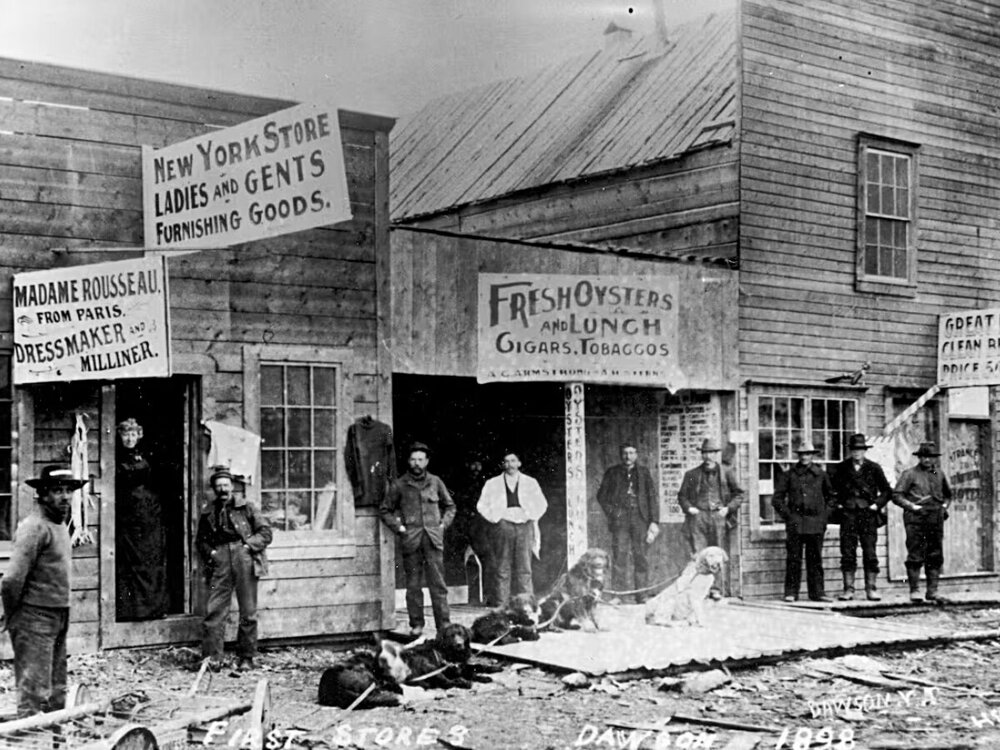
Entertainmentin Dawson City
They say that in short supply in Dawson in those days there were almost everything except for gold. Salt, for example, by price equated to this precious metal - when trading, it went one to alone. The price of a cow could reach up to 16 thousand dollars, and a chicken egg sold for a dollar apiece (recall that found by prospectors the first gold nugget was valued at $4).






